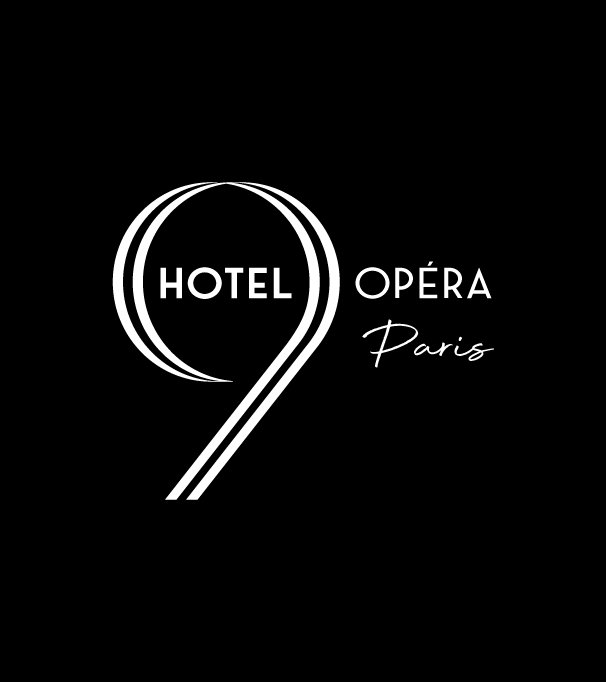A hotel near the Gare du Nord in Paris
A hotel near the Gare du Nord in Paris
Gare du Nord
9Hotel Opéra is just a 10-minute walk from the Gare du Nord area
Located in the 10th arrondissement of Paris, Gare du Nord is one of the busiest and most beautiful train stations in the city. It is situated not far from Gare de l’Est—another architectural gem—in a popular district of the French capital, largely rebuilt during the 19th century under the direction of Baron Haussmann. A hotel near Gare du Nord ensures you're just steps away from iconic Paris landmarks and allows for easy travel throughout the city, the Île-de-France region, and even Northern Europe.
A hotel ideally located near Gare du Nord
9Hotel Opéra is equidistant from both the Opéra Garnier and Gare du Nord, so within just a few minutes' walk, you can reach the main Parisian terminal for trains heading to northern France and neighboring countries. Since its origins, Gare du Nord has been internationally oriented, with connections to the UK, Belgium, Luxembourg, Germany, and the Netherlands. Eurostar and Thalys trains depart from here.
It's also a vital hub for public transportation, frequented by nearly 300 million travelers every year. As a major metro station well served by RATP bus lines, several RER lines crossing the greater Paris area, and the suburban Transilien network, it is a key transport hub in the 10th arrondissement of Paris.
Its geographical location is even more advantageous thanks to its proximity to Gare de l’Est, another of Paris's six main SNCF railway stations.
Gare du Nord, a lively Paris neighborhood
Directly across from the station is the famous Parisian brasserie Terminus Nord. Located on rue de Dunkerque, it is known as much for its atmosphere as for the quality of its food and service. The seafood—especially oysters and mussels—is always a safe bet. This brasserie also serves classic French fare such as poached eggs in red wine sauce (œufs meurette), pâté en croûte, award-winning andouillette sausages, veal kidneys, and pepper steak.
Set in a decor that blends Art Deco and Art Nouveau, it offers a warm welcome just meters from Gare du Nord. As one of the finest brasseries in Paris, it draws in food lovers, connoisseurs, and passing travelers alike. It’s also perfect for a hearty breakfast after a night on the train.
A little further away, Brasserie Bellanger on rue du Faubourg Poissonnière offers traditional French dishes in a classic and elegant setting.
Roughly 200 meters to the south, the church of Saint-Vincent-de-Paul—a massive 19th-century structure built on a raised platform—is listed as a historical monument. Its basilica-style layout evokes various religious architectural traditions without copying any in particular. Gilded like an Eastern basilica, it features two grand organs and a solid oak floor.
From rue La Fayette, which faces the church, it's easy to reach boulevard de Magenta and the Saint-Quentin Covered Market, a lively local marketplace housed in a striking glass-and-steel hall.
A train station near Canal Saint-Martin
While the iconic Moulin Rouge is not far from Gare du Nord, what many Parisians especially appreciate is the nearby Canal Saint-Martin. Just a few minutes’ walk down rue La Fayette takes you to the canal, built in the early 19th century to bring fresh drinking water into the city. It connects the Bassin de la Villette and Canal de l’Ourcq to the Port de l’Arsenal by Place de la Bastille, ultimately joining the Seine.
A ribbon of blue amid a mostly stone-and-concrete district with few parks or green spaces, the canal is a favorite spot for strolling and relaxation, popular with locals and tourists alike.
Partly covered during Haussmann's renovations under Napoleon III, the canal now runs beneath boulevard Richard-Lenoir. Yet around Gare du Nord, it remains a true urban oasis—an enclave of biodiversity in the heart of Parisian life.
Architecture of Gare du Nord
Gare du Nord’s architecture is remarkable in many ways. Opened in 1846 by the Compagnie des chemins de fer du Nord as the departure point for the Paris–Lille line, the current structure dates from a major reconstruction started in 1861 by architect Jacques Ignace Hittorff. He designed a U-shaped neoclassical building in line with the style of the time. To mark the arrival of the railway in Paris, he created a monumental façade—which, ironically, limited future expansion within the original footprint and necessitated the later addition of a glass-and-steel hall.
The Roman-inspired façade is built around a central pavilion resembling a triumphal arch, flanked by two smaller ones. It is adorned with 23 statues representing major cities served by the railway company (Warsaw, Paris, London, Berlin, Amsterdam, Brussels, Vienna, etc.). These statues range from 4 to 5.5 meters in height, with Paris naturally taking the central and highest position. The station’s interior was originally decorated in a restrained style, with waiting rooms featuring faux marble finishes and designs symbolizing industry. Today, only the great glass roof and its cast iron columns remain from the 19th century; the station has since been modernized to accommodate increasing numbers of travelers and new shops.
Large-scale renovations took place in the 1980s to prepare for the Channel Tunnel, and again in the 2000s, with the most recent works improving passenger circulation. In 2004, renowned designer Philippe Starck redecorated the first-class lounges.
History of Gare du Nord
Railways arrived in Paris in 1837, starting with Gare Saint-Lazare. Less than a decade later, in 1846, the first Gare du Nord line opened, connecting Paris to the Belgian border via Lille and Valenciennes. Within two years, the station had outgrown its capacity. As a result, it was partly dismantled in 1860 to make way for the building we know today.
The arrival of rail travel in the capital in the mid-19th century was a major upheaval. Just fifty years earlier, France was in the throes of Revolution; the Bastille still stood, and Paris had not yet dismantled its defensive walls.
By the 1840s, the Poissonnière neighborhood was dramatically transformed: both Gare du Nord and Gare de l’Est were built on huge plots of land, along with the nearby Lariboisière Hospital. While the forecourt of Gare du Nord was redesigned by Paris city hall in 2005–2006, it had barely changed since 1865, when major works were completed in connection with the 1855 Universal Exhibition.
9Hotel Opéra near Gare du Nord
Our hotel is located in the heart of Paris, between the Poissonnière and Cadet metro stations, at the foot of Montmartre and just north of the Marais district—only a 10-minute walk from Gare du Nord. This makes it an ideal location for traveling throughout northern France and Europe, as well as exploring Paris and the surrounding region.
Close to Palais Garnier and the Grands Boulevards, the hotel sits in a lively neighborhood that is both popular and creatively dynamic. It’s near the Porte Saint-Denis, a favorite of surrealist founder André Breton, and not far from Montmartre, famous for its literary and artistic legacy. Here you’ll find authentic Parisian brasseries as well as gourmet restaurants, fashion boutiques, and shops offering Indian and African spices. It’s a colorful, eclectic, and welcoming area—both quintessentially Parisian and constantly evolving.
If you’re looking for a comfortable and convenient place to stay for your next trip to Paris, our hotel is the perfect address. We offer quality service, well-decorated and fully equipped rooms for a restful and peaceful night at an affordable rate.
Whether you're traveling for business or leisure, our hotel can meet all your expectations. Our friendly and professional staff is here to make your stay as pleasant as possible.
We offer two breakfast options: a full buffet for a relaxing start to the day in our charming breakfast room, or a quick breakfast for guests on the go.
In short, if you're looking for a pleasant hotel near Gare du Nord with quality service, our establishment is the ideal choice for your next stay in Paris. Book now to enjoy our exceptional offer and experience an unforgettable stay in the City of Light.


